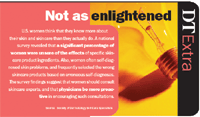- General Dermatology
- Eczema
- Chronic Hand Eczema
- Alopecia
- Aesthetics
- Vitiligo
- COVID-19
- Actinic Keratosis
- Precision Medicine and Biologics
- Rare Disease
- Wound Care
- Rosacea
- Psoriasis
- Psoriatic Arthritis
- Atopic Dermatitis
- Melasma
- NP and PA
- Skin Cancer
- Hidradenitis Suppurativa
- Drug Watch
- Pigmentary Disorders
- Acne
- Pediatric Dermatology
- Practice Management
- Prurigo Nodularis
Article
Silicone effective for acne scarring; side effects limited
Atlanta — Although many physicians remain skeptical about the use of injectable silicone, Stephen Mandy, M.D., of Miami discussed the benefits of using the synthetic polymer to treat acne scarring at the American Society of Dermatologic Surgery Meeting here.

"In the late 1990s, the FDA (Food and Drug Administration) banned the use of injectable and implantable silicone due to alleged side effects," he says. "However, several years ago the FDA again approved the use of silicone for injection into the eye to replace the fluid within the eye when that had been lost. That opened the door for off-label use of silicone again. So many of us have once again begun to use something we are very familiar with and had been using for 20 years. I now use silicone very regularly for acne scarring, as I did in the past. It is an excellent treatment for certain types of acne scarring," he says.
Limited side effects

Silicone also is a relatively inexpensive filler, especially considering the fact that it is permanent and the patient will need to come into the office for only one or two visits. Also, a very little bit of silicone goes a very long way for acne scarring.
Over the years, the problems associated with silicone injections have been related to silicone being used in large quantities. However, Dr. Mandy utilizes a special technique called the microdroplet technique to minimize potential side effects including silicone migration and/or misplacement.
"There have always been reports in the literature of silicone-induced granulomas, which are an inflammatory reaction in the skin. However, utilizing silicone with the microdroplet technique, such small quantities are injected that it would be improbable that you would have a granuloma of any significance," Dr. Mandy says. "Now, when I say that, I have never experienced a silicone granuloma in the 30 years of my using it, but other doctors have experienced them in practice. I think with the medically pure silicone we are utilizing now, if the silicone is utilized with the microdroplet technique, it is very unlikely we are going to have significant problems with it."
Microdroplet technique
The microdroplet technique involves injecting 1/100 cc of silicone into an individual site. In general, one-tenth cc to two-tenths cc of silicone can treat 20, 30 or even 40 acne scars; therefore, very tiny amounts are injected.
"For instance, if you have a scar that is perhaps 2 to 3 mm in width you might put in two or three injections of 1/100 cc each into that area. You do not try and correct it by putting one larger injection; you put three different smaller injections. So you are using very small amounts of silicone injected into any one spot," Dr. Mandy says. "By doing that, you limit the potential for having too much silicone in any one place, where it can become the focus for a granuloma or where it could migrate from where you intended it to be," he says.
Insulin syringe
Also, Dr. Mandy recommends the use of a 32 gauge three-tenths cc insulin syringe for silicone injection, as it is a very small needle and very precise. Although silicone is very viscous and difficult to inject except through a large-gauge needle, the use of the insulin syringe provides a plunger that enables the dermatologist to exert less pressure and get enough pressure to inject with a small needle. Overall, the small insulin syringe allows the practitioner to inject through a very tiny needle, which provides great precision and allows for use of only tiny amounts.





